The history of pure Iranian horses
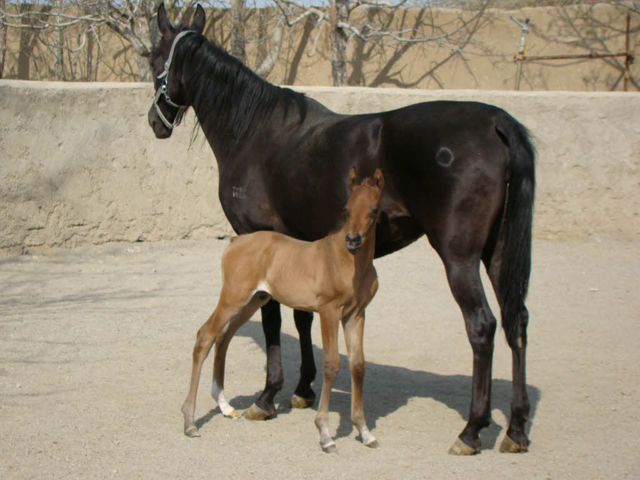
The horse is one of the animals that has had a special place among the Aryans and in the economic and religious culture of Iranians since the beginning.. Aryans moved from place to place in 1400 BC by horse-drawn carriages and the important use of horses, and their famous carriages have attracted the attention of historians more than anything else, and they have mentioned them with importance..
During the period of the Medes, who ruled for more than a century and a half from 554-701 BC, they gave the most important role to the cavalry in their battles, which made Kyaxar, the third king of the Medes, to confront the Assyrian army in Mesopotamia existed to establish the cavalry, and after the unification of the Medes, Parthians, and Persians, who were all Aryans, there was an attack on the barbaric people of Assyria and the defeat of that barbaric people and the destruction of their generation and race, and this was a gateway victory. In order for the Aryan horse to enter the Arab world, of course, the Arabs had taken the horse from the Assyrians before that time, and the Assyrians had also acquired the horse from the Aryan people in many previous raids..
… ( Do not miss this very exciting and interesting article)
In their cultural sources, the Chinese have mentioned the Parthian Tiztak horses, which were the most effective tools of the Parthians. Parthian is an Iranian and Aryan nation that had very good war men and horses, and the word partisans, which means war guerrillas, was taken from the name of the Parthian people because of their agility and courage in fighting the enemy..
The horse was very important in Parthian trade. Horses were taken to the islands and lands of the Persian Gulf both for transportation and for sale, and the Arabs partially supplied the horses they needed by buying horses against dates and also by obtaining horses through theft and looting. are. also” The Assyrians living in Mesopotamia were effective in transferring the Persian horse breed to the other side of the Gulf waters
In order to protect the lives of their horses, the Parthians used to put metal coverings on their bodies and covered the bodies of the horses with metal and leather coverings.. To prove this statement, let's remember the words of the great Ferdowsi that he said in the battle of Rostam and Esfandiyar:
The bottoms of their mouths are full of blood and dirt
Tirdad III, the Parthian king, who was in a war with his brother over the rulership, suffered from a prolonged drought that plagued the people of Iran.. The sleepers told him that the key to this misfortune is in your hand and that this matter will not end except by sacrificing his horse to God, which was done with all the love Tirdad had for his horse by the Euphrates River.. It should be noted that horse sacrifice was not allowed in the first ritual of Iranians, i.e. Zoroastrianism, and in Islam, and this noble animal was given by Prophet Muhammad. (ص) It was declared an abomination so that the generation of this precious animal would not be brought to extinction, so as evidenced by history, without any doubt, the origin of this graceful quadruped was Great Iran or Iranvich or the Promised Land, which is limited from the north to the shores of the Aral Lake, from the east to the foothills of the Pamirs and across the river and from the south to the shores of the Persian Gulf to North Africa and from the west to Mian Rodan (between the two rivers) It has been as far as the land of Byzantium, to the extent that they say that you cannot find a horse in the whole world that does not have the blood of an Iranian horse flowing in its veins, which is not far from the mind because it is mentioned in the Avesta in the Gathas of Zoroaster in the 17: I ask you, O God, will the promised ten mares, one camel and one stallion reach me? In Ahnuvogat Fergerd 19, it came from you, the creative force of stars, again in Fergerd 11, God appointed the farmer Satur Puror for your grief.. Archaeologists have found stone inscriptions and standing columns from the palaces of Apadana, Susa, and Takht Jamshid in their excavations. Rider and horse in Rostam Abad north or other things such as bridle and saddle in Lorestan and Pars regions, a type of horse called Hipparion which was discovered in Chal Maragheh border proves the reliance of Iranians on horses in political, military and economic affairs.. In Silk Kashan, the remains of saddles and leaves were discovered, in Seluz region, fifty kilometers from Urmia, equestrian equipment was discovered, in Tepe Gyan in Nahavand and in Khorvin near Kurdan, images of horses were discovered on vases, in Amlesh Gilan, pottery jars dated to 1200 It was obtained in the year before the birth of the horse carved on it.
The horse has been in the service of man for a long time and for the first time this animal was bred by Iranians and presented to the world. But other people have looted the fruits of Aryan's efforts in merciless poaching and even named it after themselves..
It can be seen in the books of historians such as Herodotus, Homer, Amin Narselen, Aria Xenophon that they respected the name of Aryans and whenever there was a discussion about horsemen and horsemen, they related it to Iranians.. Horse names were used as a part of human names in ancient times among Iranians, such as Arjasb, Jamasb, Tahmasb, Lahrasb, Gestasb, Biorasb, and Weshtasb.. Xenophon mentioned in his notes that wherever there are fast horses and powerful chariots, the greatness of the government is there, and to encourage his nation, he says that riding should be learned from the Iranians, every Iranian rider is one with the horse and attached to it..
Amin Marcelen says in his book "Eastern Civilization".: Iranians are brave and in riding and shooting, they are less ethnic. Iran's pastures are very large and a special breed of horse grazes there, which is unique in the whole world. Iranians jump on them well and ride well with immeasurable agility and dexterity..
The Greek historian Herodotus wrote 2100 years ago: Iranians learn three things from the age of 5 to 20, riding, shooting and telling the truth.
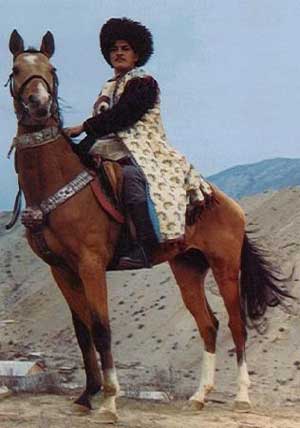
Xenophon writes that all Iranian horses were covered in special horse armor on the battlefield. Images of horses are engraved on the Achaemenid stone inscriptions. Xenophon says in his book Cyrus that Cyrus learned riding from his grandfather at the court of the Medes, because horses were rare in Persia and it was difficult to breed them in the land of Persia.. Of course, how to reach the kingdom and the conquest of Babylon and the horse racing in Babylon Square is a story that does not fit in this text.. Herodotus tells about Xerxes king's invasion of Greece: This emperor came to Thessaly during the war with the Greeks, where he heard that the horses of this land are the best Greek horses.. He wanted to test, he ordered to gallop, in this test the Thessalian horses were left behind.
Darius I says in the Takht Jamshid inscription: … He deserves that his hometown has good people and good horses. He says again: This land of Persia is Ahura Mazda (great god) He told me that it is a beautiful land with good horses and good people.
Herodotus says that the horse herd of the Achaemenid soldiers is kept in Babylon, where eight hundred horses and sixteen thousand mares are bred.. In Sicily in Asia Minor, 365 white horses were kept every year for the number of days of the year. During the Achaemenid period, there was a pasture along the way of travelers who were going from Persia and Babylon to the Caucasus Gate, where fifty thousand mares grazed..
In the Chinese history, which was written by Wei Shu in 572 AD, it is said that Iran has famous horses and the rich people of the country have several thousand of such four-legged animals..
Many horses in the history of this land have always become immortal with their riders and have been recorded in historical books and in the chests of Iranian people and culture, such as: Shabahang Bijan, Rukhesh Rostam, Shabdiz Khosroparviz, Golgun Guderz, Qur'an Lotf Ali Khan Zand, Behzad Kambojih, Ghazal Shah Abbas and even Zul-Janah of Hazrat Hussein Bin Ali (ع) It was an Iranian horse breed (Due to the fact that only Iranian horses are flanked and have raised head and tail).
Professor Pordawood says: It is this insolent ranger who brought the roaring and speedy cavalry and agile riders to the field of campaign and made a vast land from the Indus to the Nube and from the Indus to the shores of the Greek sea from those Achaemenians, and in the history of several thousand years of this border and land, It has made Iranians proud.
Herodotus says: Xerxes had Arab riders in his army who rode on camels and galloped, but they were behind the horses, and in another place he says that the army of Cyrus Pon reached Sardis, the capital of Lydia, met Croesus in a plain, and they prepared for battle. He was afraid, so he thought of a solution and ordered to bring Ashtaran to that battlefield. When the horses of Croesus' army saw them, they got scared and the war ended in favor of Cyrus' army.. The horse is always afraid of the shape and body of the camel, and the smell of the camel is not pleasant for the horse.
This is stated in Khayyam's newspaper: From the face of cattle, there is no better face than horse. The king's horse is a grazer of all cattle, and they say that the angel who drew the wheel of the sun is in the form of a white horse..
In Qaboos Nameh, there is also this saying that the world depends on people, and people depend on animals, and the best animals are horses, and having them is both godliness and wealth..
About horse breeding during the time of Farrokhi Sistani in the book Chahar Essays of Taaliq 550 Hijri Prosoadi Samarkandi, Farrokhi Sistani who turned to the court of Amir Abu Zafar was in the spring where eighteen thousand mares were drawn. (A mare with foal) There was a fire in the pasture and they lit a fire there for the annual heat. Farrokhi says this in describing this crematorium:
Shahryar's grave was so dark now, but he was still staring at the darkness
The green of the green is like the fence of the fence
On the curtain of Khosrow's house, Pirouz Bakht, from the hot foot of a sun-like fire
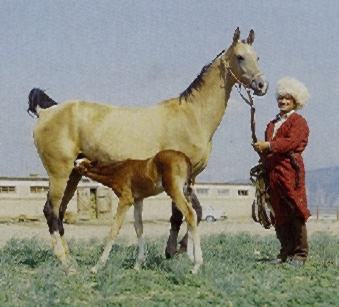
In his book, Peron says the name of the horse: Tazi and English horses are both born from Iranian horses. This is what Peterman says in the book The Origin of Horses on page 412: Iranian horses were introduced in Asia Minor and Mesopotamia during the reign of the early Aryans, and for this reason, the Assyrians from the beginning of their establishment sought to obtain Iranian horses and in their frequent attacks, they always thought of horses, and their monumental columns are completely” He is the witness of this case.
As the two kings of Assyria named Banipal and Saradanapal say in cylindrical cuneiform lines.: With the help of Assyria, during his one-month and twenty-day war journey to the province of Ilam, he brought disaster on the poor people of Aryan, captured all the property and equipment of three horses and riders, horses, soldiers and other four-legged animals, and looted them. I brought the land of Assyria. As it was said at the beginning of the discussion, the Assyrian government was later destroyed by the alliance of Medes, Persians and Parthians.
The horse entered Mesopotamia and Arabia in two ways, first through the Assyrians and second, according to Peterman in the book Asl Asb, which says:: When the horse by the Phoenician merchants (Current Lebanon) Chaldeans and Iranians arrived in Arabia and Mesopotamia, the first purchases and sales were made at that time, for a while the name of this animal was not known to them and they called it mountain donkey or eastern donkey. (Legs) Because he came from the mountains in the east of those lands. After some time Chaldean Arabs named it Aina” They asked the merchants and told each other. Later, they called it the name of the Persian people, and because it is a letter in the Arabic language (P) There is no letter (ف) They used it and called this animal Fars. Fars is a trigram word meaning derived from Persians or Persians.
During the reign of Thutmsen III, the greatest king of Egypt, who is said by the French author in his book entitled "Investigation of the Cemetery of Rahmza".: The patterns of people and horses that were found in this cemetery and were carefully examined prove that the horses that are covered in this place are of Aryan horses and their nurses are also Iranians who were sent to Egypt for horse training and riding..
Marcopolo says: In Iran, there are the most beautiful horses of the East, and due to their reputation, merchants bring them to India for sale and sell them to others at an exorbitant price..
Cullen writes in the book "Horse Breeds of the World".: In 1824 AD, the British cavalry in India had 7546 horses, which were bought from Iranian horses and their fractions were also obtained from Iran every year.. British colonel de Filot says this in the translation of Hashemi's Farsnameh book from Urdu to English: The formation of the pure blood breed of English horses today is from the Iranian horse breed, which in 1620 to 1750 bought the best Iranian horses and sent them to India..
Schwartz says in the book "Horse Breeding in the World" that during the trip of Naser al-Din Shah Qajar to Europe, two valuable horses accompanied the caravan.. One, 148 tall and very beautiful with a well-shaped neck, was given to the Ilkhi Tsar in Russia, and the other rosy indigo horse, 162 tall, with a balanced stature, was presented to the French government..
Vale Devensi says: Arab and Turkish horses that are brought to Europe are the same as Iranian horses, with the difference that Iranian merchants take them to Arab lands for sale and sell them there, and then they are brought to Europe through Arab merchants and they name them Arab. Basically, these horses are Iranian.
French traveler Chardin says: Iranian horse is the best and most beautiful horse in the world, in terms of height, it is taller than other horses, it has a delicate face, thin legs at the same time strong, wide pants, perfectly proportioned body.. He is calm, patient and humorous. Hardworking and agile, satisfied in food, so that they can be fed with any fodder.
between the government of Iran and the government of France during the time of Shah Sultan Hossein Safavi and Louis XIV, on the date of Rajab al-Murjab 1120 A.H. corresponding to September 1708 A.D.. A contract concluded and according to that treaty, in Article 28, the government of Iran allows the government of France to buy eight breeding horses and four mares a year with the consent of the owners, subject to the condition that they do not belong to Ilkhi Shah and take them to France.. Of course, in Isfahan, you should follow Mir's opinion, and in other states, they should leave Iran with the opinion of the governors. In August 1715, during the reign of Feth Ali Shah Qajar, on the occasion of the good relations between the government of Iran and France, one of Iran's famous horses was sent as a gift to the court of Napoleon Bonaparte.. It is the famous white horse of Napoleon who is a famous painter “Horace” He painted the said horse. The name of this horse ((the world)) and his skin is in the Louvre Museum. Of course, some horses were presented to the Russian court, the most important of which was the Pasha horse.
Andre Sakas in the book "The Horse in Greece" and the French Peterman in the book "The Principle of the Horse" describe the case of Alexander's horse as follows.: One of the Phrygian people of ancient Iran, who was a merchant, brought some horses and mares to Macedonia for sale.. These horses all had prominent foreheads because the people had never seen such horses with prominent foreheads, according to the habit of ancient Iranians who considered them sacred, they also followed this habit.. One day Philip the Macedonian king and his son Skand saw some horses and mares grazing in the pasture from the top of their palace.. Philip loved horses and was a good rider. But he told Iskandar to take that handsome horse. After some time of galloping, Iskandar was able to take the mentioned horse and train it in his own name. His name was called Bosphalos, which means prominent forehead.
Khorsan horse of Umayyad caliph Al-Hajj was one of the best examples of Iranian horses, which according to the opinion of Arab storytellers, he originated from Khorasan and became known as Khorasan, and the founder of a breed called Khorsan, which is known today..
The Greek Polypus, who lived in 201-130 BC, wrote this in his time. The land of Madh (هگمتانه) He is superior to other places for his people and his horse, and as his horse is the best in all of Asia, the breeding ground for the horses that are for the king's stable is in Media.. According to a story, Hamdani horse's dark is from this dark.
……………………………………
The basis of writing:
Fourteen months of captivity in Turkestan (Pluckville)Horse science (Professor December)Nowruznameh (tents), Shah nameh (Ferdowsi)Farsnameh (Ibn Balkhi), four articles (My shows Samarkandy), animal (Aristotle)Korshnameh and Athabazis (گزنفون)Antiquities of ancient Iran (Flanden Decoste)Travel to Iran (Cabbage), around the world and studies on oriental horses (Colonel Duhose)Greyhound (yesterday)Horse principle (Peterman)The history of Eastern governments and their civilization (Marco Polo)The horse race of the world (Colin)Horse breed and breeding in the world (Schwarzenegger)The third volume of the history of civilization (Will Durant)Eastern civilization (Amen Marceline)Great fashion description (Strabo)English horse (yat)Chardin's travelogue (chardonnay)Qaboosnameh (Kikavus Bin Qaboos), the entirety of the dates (Abul Hasan bin Muhammad), historical geography and detailed history of Kermanshah clans- gordkord (Ardeshir Keshavarz).
1 – Iran Horse Riding Federation 2 – Persian-Horse base.Ir
Taken from Mehr Mihan


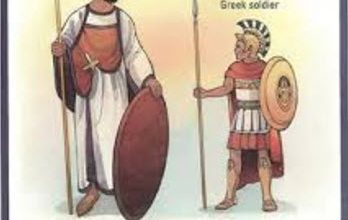
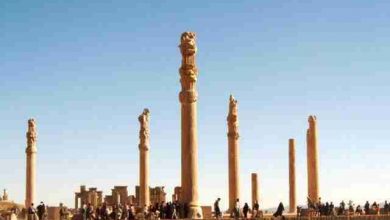
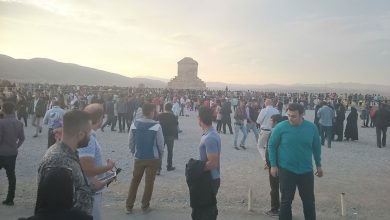

درود, The information was comprehensive and complete and of course necessary, which will make us Iranians more proud. Thank you
Thank you for your kind words, Mrs. Mina